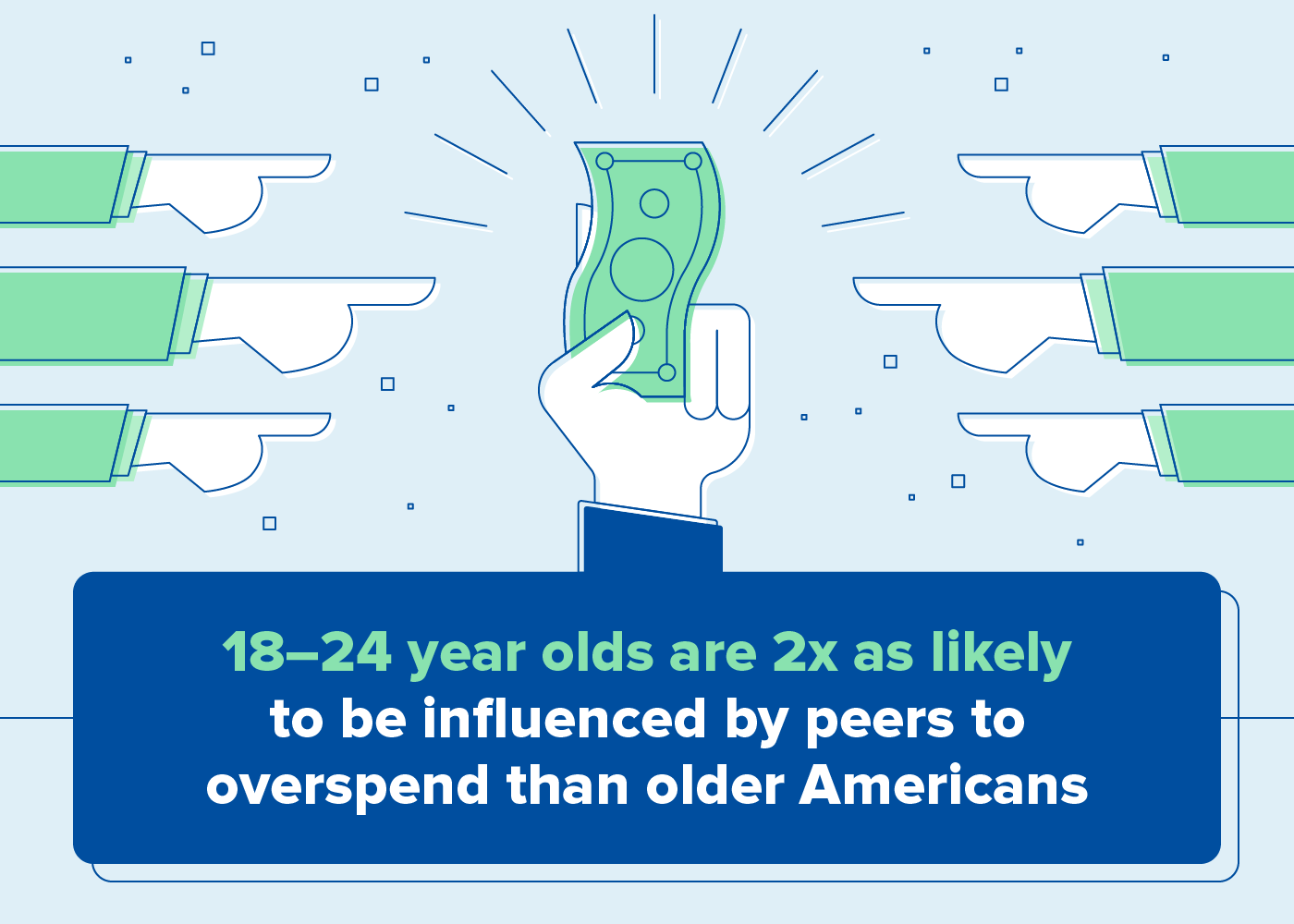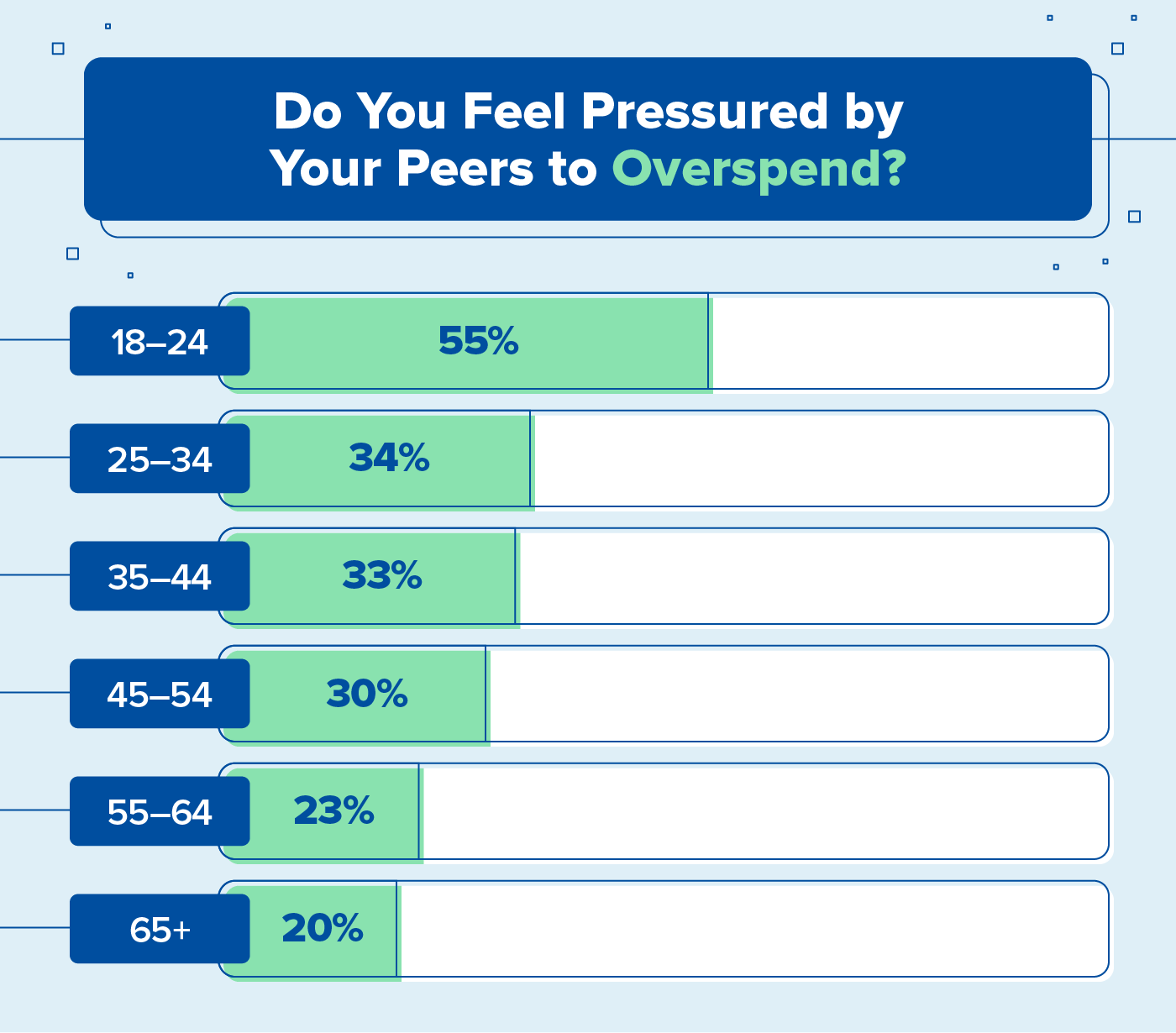Each generation enters the workforce in a different financial market. Today’s young millennials are facing their own unique challenges with the rising cost of college and the burden of student loan debt. It may seem like millennials biggest financial hurdle is the student loan debt crisis, and while that’s certainly one headwind, there’s another force at play that can be easily managed — peer pressure.
In a culture that pressures consumers to spend, younger Americans are significantly more likely to influence each other’s purchasing behaviors than previous generations. We know this from consumer studies that have resulted in statistics like 84 percent of millennials don’t trust traditional advertising and the demographic’s reliance on word-of-mouth recommendations and online reviews.
With this in mind, we polled 1,000 Americans on whether they feel influenced by friends to overspend. You can find our results below, or skip ahead to the infographic.
Key survey findings
- At 31 percent, nearly one third of Americans feel pressured by peers to overspend.
- Pressure decreases with age, considering those aged 18–24 are 1.75 times as likely to feel pressured to overspend than those 65+.
- Of those who responded yes, the majority feel pressured to overspend on a monthly basis, which makes sense considering many people plan their budgets in monthly intervals.
According to our survey of 1,000 Americans, more than half of respondents aged 18 to 24 admit feeling influenced by peers to overspend. When compared to an average of just 28 percent of older Americans who responded the same way, that number seems relatively large.
The definition for “millennials” can sometimes seem as ambiguous as the generation themselves, but according to the US Census Bureau, a millennial is anyone born between 1982 and 2000 — making millennials between the ages of 18 and 36 as of 2018.
Millennials are certainly leading the pack, but they aren’t alone in feeling this pressure. Thirty-one percent of respondents, regardless of age, reported that they feel pressure from peers to overspend.
Some people like Trent Hamm, author of The Overspent American, claim that the best way to stay in control of your budget is to “buy based entirely on what [you want] to do, not based on anyone else’s influence,” but sometimes that is harder said than done.
Surprisingly, gender plays little to no role in a person’s ability to resist peer pressure to spend. Men and women feel more or less the same pressure, despite the lingering stereotype that women feel a greater deal of burden to appear perfect — especially in the online world.
What drives millennials to spend
Besides pressure from friends, what else makes millennials pull out their credit cards?
In addition to our own survey about influence, we pulled other useful statistics to showcase millennials’ spending habits.
If you’re a millennial, consider whether these tactics influence the way you spend. And if you’re a business owner, use these tips to better understand the consumer behaviors that drive millennials to purchase.
Millennials are commonly referred to as the lazy, entitled generation, but in reality are an incredibly diverse group. Regardless, younger Americans do seem to be making a departure from the shopping habits of past generations. Consider that millennials and Gen Z are the first generations to grow up with access to the internet. Such a drastic change not only makes purchasing online easier but also sharing opinions amongst peers. As such, the relationship between individuals, their peers and brands has never been closer.
Sources: Lexington Law | US Census Bureau | AdWeek | Sharethrough | UPS









